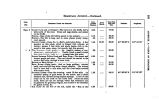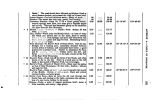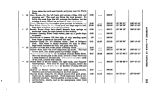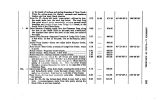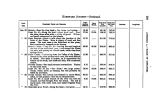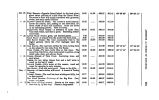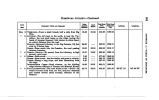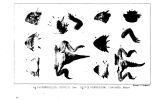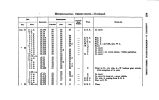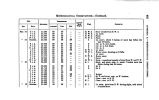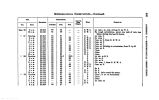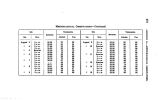| OCR Text |
Show APPENDIX C.- REPTILES. 351 of the length. The head is moderate, conical, detached from the body by a somewhat contracted neck. The eyes are comparatively large, occupying the middle of the length of the head. There are two anterior orbital plates, the uppermost very large, vertically elongated, reaching the upper surface of the head; the lower one, on the other hand, is very minute, situated between the third and fourth labial shields. The postorbitals are four in number, of medium, but nearly of equal size, the upper ones, however, being slightly the largest. The lower one is separated from the small anterior orbital by the fourth labial shield, which reaches the orbit. The scales of the back and sides are keeled, elliptical in form, and a little more pointed posteriorly than anteriorly. On the occiput they are smaller, polygonal, and smooth. The coloration of this snake resembles at first glance that of Coluber ezimius; the ground colour is a light yellowish- brown, maculated with large patches of a deeper brown, margined with black, and much smaller patches of pure black. The dorsal row of brown patches is considerably the largest, as in Coluber eximius. On the abdomen there are two rows of small and semilunar black dots, the convexity of which is turned forward. A narrow band of black is seen on the upper surface of the head, in advance of the eyes, extending obliquely to the angle of the mouth, being only interrupted by the eye itself. This species was collected by General Churchill, on his march to Mexico, on the left bank of the Rio Grande, at the crossing near Presidio del Norte, in 1846; and it is with much satisfaction that we embrace the occasion to pay a tribute of respect to one, who, during the exercise of his arduous official labours, has always found time for the advancement of natural history, by securing specimens of whatever new or interesting species of animals might fall in his way. COLUBER MORMON, Baird and Girard. SPEC. CHAR.- Posterior frontal plates very large; vertical plate long and very narrow on its middle; eyes very large. The only specimen which we have seen of this snake may prove hereafter to be a young individual, as it is only one foot and a half long; but we are satisfied it will also prove to be a very distinct species. The slender and conical tail forms between a third and a fourth of the total length. The head is elongated and ovoidal, separated |
































































































































































































































































































































































